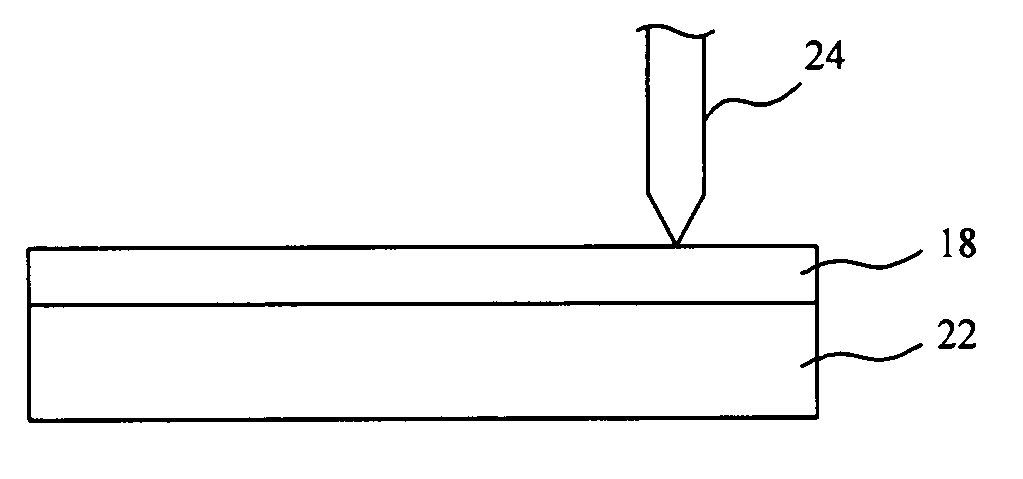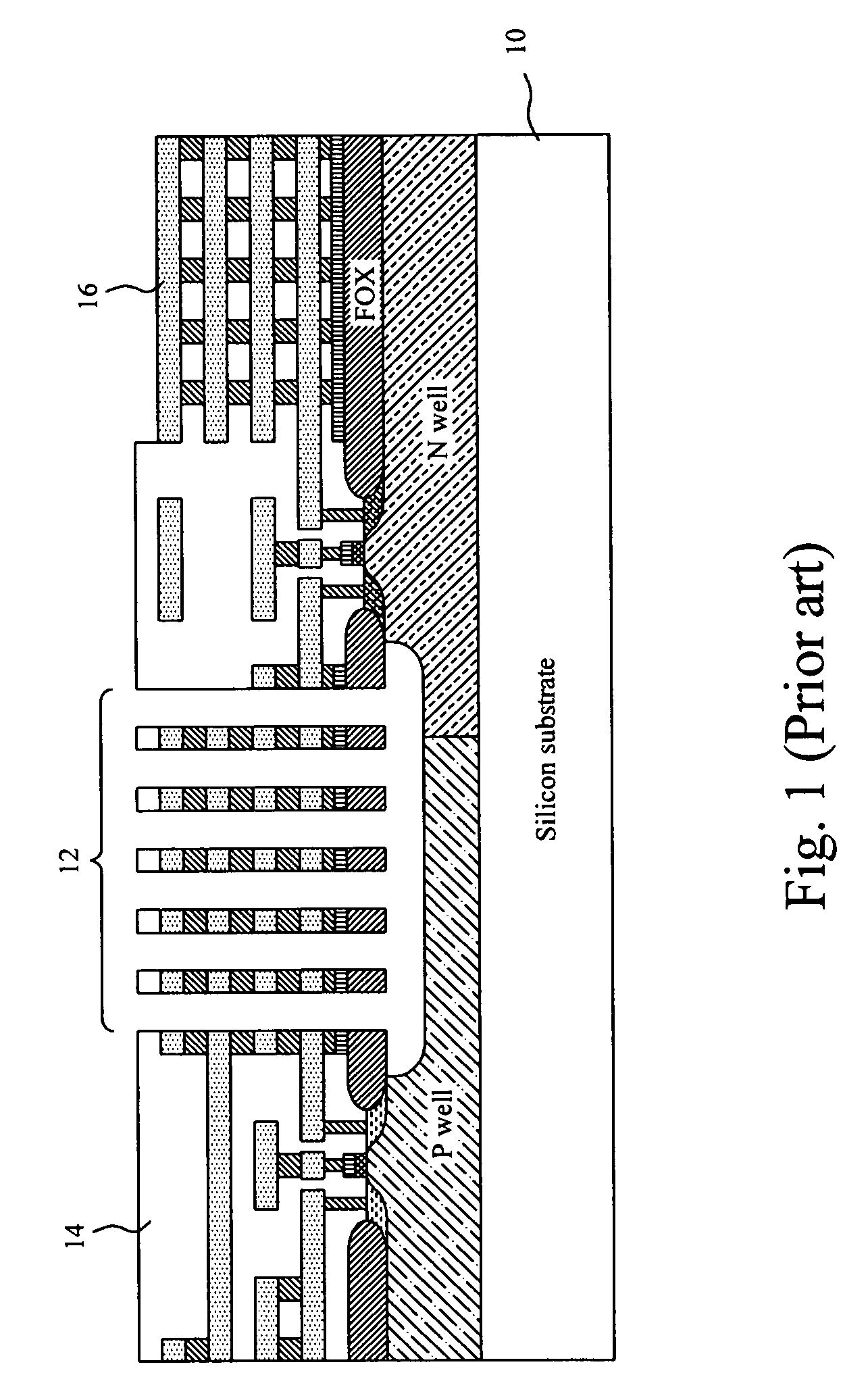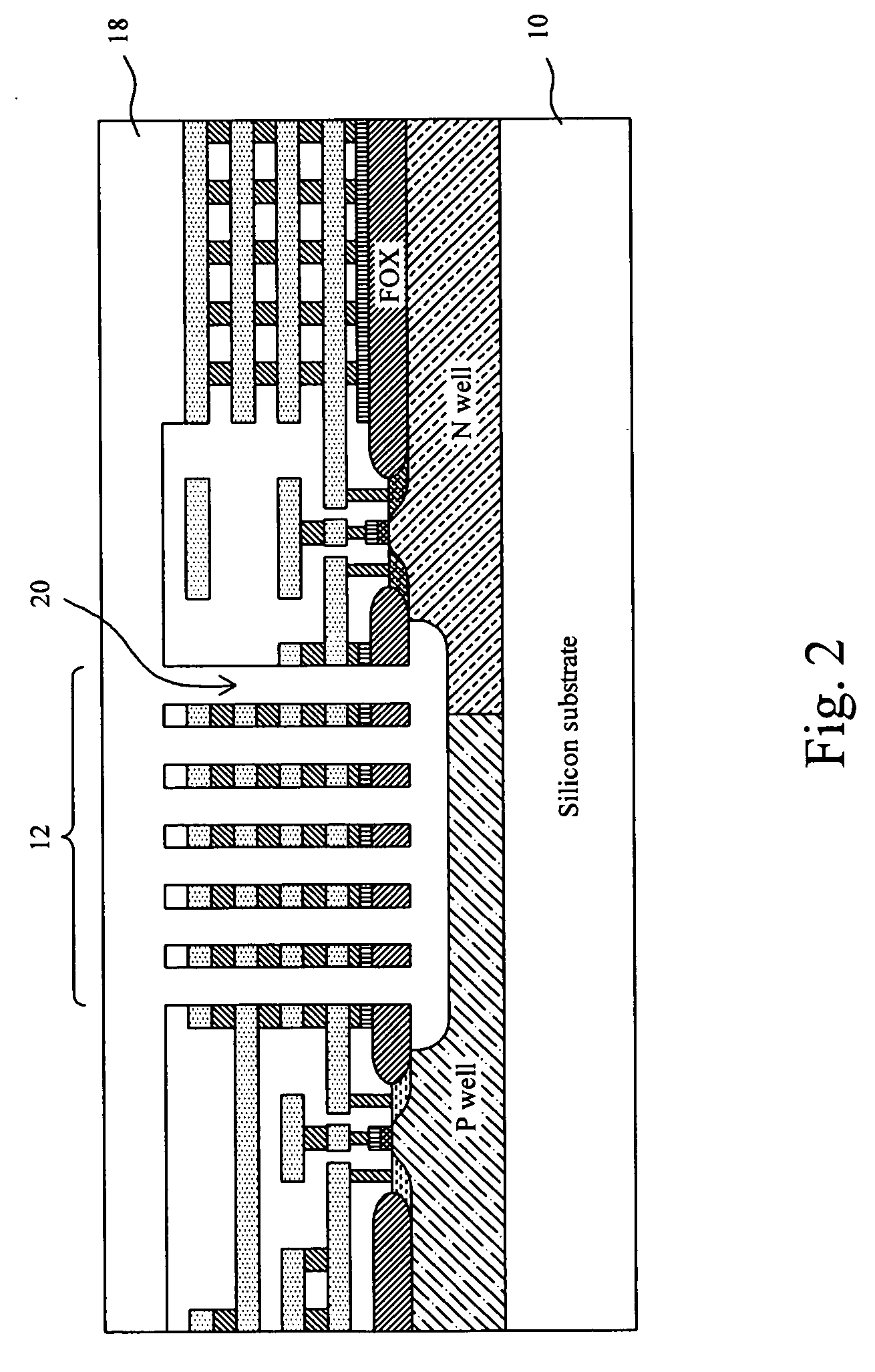Methods for dicing a released CMOS-MEMS multi-project wafer
a technology of cmosmems and multi-project wafers, applied in the field of dicing processes, can solve the problems of damage to released micromachined devices, limited use of micromachined structures, and lack of protective layers, and achieve the effect of high reliability
- Summary
- Abstract
- Description
- Claims
- Application Information
AI Technical Summary
Benefits of technology
Problems solved by technology
Method used
Image
Examples
Embodiment Construction
[0024] Two reliable methods are proposed to overcome the destruction and damage issues.
[0025] In this method, as shown in FIG. 2, a thick photoresist 18 is used to protect the released microstructure 12, in which the photoresist 18 fills into the gaps 20 in the released microstructure 12 and covers over the released microstructure 12. FIG. 3 is an illustrative diagram when dicing a released CMOS-MEMS multi-project wafer by this method, in which the wafer 22 includes released structures, e.g. the microstructure 12 as shown in FIG. 2, and the photoresist 18 is spun on the full wafer surface to cover all cavities and structures on the wafer 22. The photoresist 18 is used to protect the released structures on the wafer 22 during the dicing process with a diamond blade 24. Further detail steps are illustrated by a flowchart shown in FIG. 4. After the microstructures on the wafer 22 are released by post processes 26, in step 28 the photoresist 18, of about 15 μm for example, is spun on t...
PUM
 Login to View More
Login to View More Abstract
Description
Claims
Application Information
 Login to View More
Login to View More - R&D
- Intellectual Property
- Life Sciences
- Materials
- Tech Scout
- Unparalleled Data Quality
- Higher Quality Content
- 60% Fewer Hallucinations
Browse by: Latest US Patents, China's latest patents, Technical Efficacy Thesaurus, Application Domain, Technology Topic, Popular Technical Reports.
© 2025 PatSnap. All rights reserved.Legal|Privacy policy|Modern Slavery Act Transparency Statement|Sitemap|About US| Contact US: help@patsnap.com



